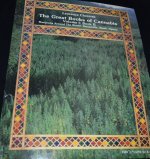J
Junkhead
Thanks for the link to the "Arizona oldschool" thread Madjag and thanks for the magazines FOE20
Drug Manufacturing for Fun and Profit
Stone Kingdom Syndicate and Mary Jane Superweed, 1969
Thanx, I remember having the Stone Kingdom book on how to extract from morning glory seeds.
I remembered it was by Stone Kingdom, mine had a pot leaf on the cover and had a meth recipe in it. Must have been the earliest edition.






















